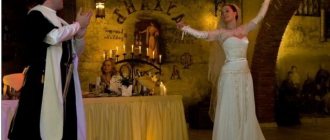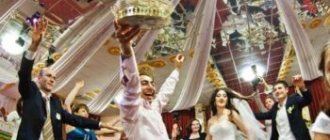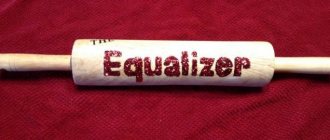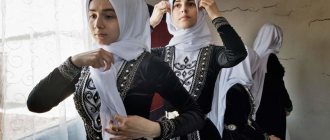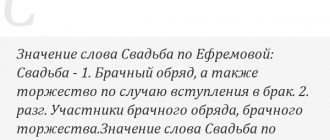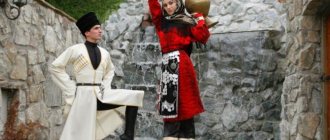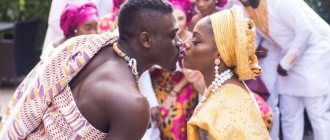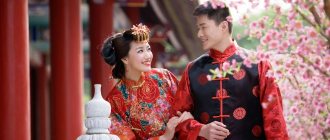Mysteries of the Chuvash people
Chuvash wedding rituals are closely interconnected with everyday and religious legends. Everyday customs include bride price and dowry. Religious legends make it possible to save a family from evil spirits and the evil eye, as well as attract happiness and wealth.
The entire wedding process lasts for several weeks and is based on many steps from meeting the newlyweds to marriage.
Dating young people
To find his beloved, the groom had to travel beyond the borders of his native area. This gave confidence that the future wife would not be in a family relationship with the chosen one. Residents of the same village could be relatives to each other. And according to the rules, it is strictly forbidden to marry a girl from your inner circle.
For the same reason, many settlements took part in the celebration, where young people got to know each other. There were also cases where the father and mother chose the groom’s couple. But they always consulted with both the boy and the girl before entering into marriage. If there is sympathy between the parties, it is necessary to give gifts. Women are presented with scarves, and men are presented with various treats.
Choosing a future spouse
After the groom has chosen his betrothed, he talks about his answer to his family. Before the wedding celebration, father and mother must make sure that a healthy and well-mannered woman is invited to the home. Since the future wife will be the mistress of the house, she must keep order. The girl’s skills were carefully checked by her relatives. Mature women are valued more, as they have a substantial dowry and experience in housekeeping.
Matchmaking process
Most often, matchmaking takes place in the spring. Matchmakers are sent to the future wife. The team includes numerous relatives and close family members. But there is a distinctive feature - the number of matchmakers is always odd. Residents who have been chosen appear at the girl’s home with treats and drinks. If the parents make the choice, then the groom is taken to the first reception. If a man does not appreciate a woman, then the young man can calmly refuse her. Then the matchmaking process begins again.
After arriving at the bride's house, the groom's relatives start a usual conversation with the girl's parents. This is done consciously, as tradition requires. If the first visit went well, then a second meeting with the future spouses was scheduled.
Some moments of matchmaking
If the matchmakers discussed all the points with the bride’s relatives, then after 2-5 days the future wife’s side came for a visit. Such a meeting made it possible to consolidate acquaintance and conclude an agreement on bridewealth and dowry. Both sides exchange treats. The bride must present gifts to her chosen one's relatives.
Negotiations about a future event take place at the table. The wedding day was scheduled after 3 or 5 weeks. The main requirement is that the holiday is held on an odd week.
The dowry includes kitchen utensils, clothing and livestock. Kalym consisted not only of money, but also of food for celebration. Such customs of the Chuvash people are still used today. Only now everything is defined in monetary values.
The giving of the bride price takes place a few days before the event. The bride's relatives place bread and salt on the table, and the groom's relatives cover it with a bag of money. The girl's father or grandfather takes the bride price, and gives the bag with the enclosed coin back. This custom is necessary to ensure that the house never runs out of money.
Wedding customs
Many ancient traditions are found at Chuvash weddings today. Among them is the meeting of the groom.
- Guests and relatives of the newlywed gather in her house and wait for the groom at the gate. They greet him, as expected, with bread and salt, and also beer.
- In the courtyard, a table is set in advance for the guests - all those who arrived in the wedding cortege must sit down at it and drink to the health of the newlyweds.
- Weddings are celebrated for two days. The first day of fun takes place at the bride's house, on the second day the invitees move to the groom's parental home.
- In the morning after the celebration, the bride is put on a hush-pu - a headdress worn by married ladies.
Preparation for the celebration
Numerous Chuvash wedding customs differ from the geographical location of the people. The ritual is also influenced by the consent of the future wife to her theft.
The event begins to take place in two houses at once. Then the groom takes the bride to his house, where the celebration continues.
2-4 days before the event, the young couple visits all relatives and friends in the settlement. There is another tradition - brewing. The first step is to clean the sauna area. After this, the bride undergoes a second bath, which allows her to be cleansed of evil spirits. After the bath, the newlyweds put on traditional costumes and ask their parents for blessings. Then the solemn ceremony begins.
Traditional wedding clothes of the bride and groom
The national wedding costume is an important part of the culture of the Tatar people. The outfits of young people at a Tatar wedding are not the same as European ones
A girl getting married symbolizes virtue and purity, so she should be dressed in a special tunic with trousers, a national costume or a loose-fitting dress that covers all parts of the body as much as possible.
The wedding outfit is complemented with a fez or scarf that completely covers the head. Only the hands, face and feet remain exposed, while the rest of the body is hidden from prying eyes.
The groom's traditional outfit is more "democratic" than the bride's. It can be classic, made in any color, and complemented with a shirt and tie. The choice of the groom's outfit is the same as for a European wedding. A mandatory element of clothing is the national headdress - skullcap.
The beginning of the celebration
The invited guests are in the house waiting for the groom. Relatives are engaged in preparatory activities. Treats are placed on the table. After which close people read a prayer for the well-being of the young family.
At the same time, in another room, the bride and her bridesmaids are trying on a wedding dress. After the groom arrives, he pays the girl's father money in the form of a symbolic fee. Then the event takes place in the house. The groom takes the place where the girl’s parents indicate.
Meeting your future spouse at a holiday
When a cheerful feast with songs and dances takes place, the newlywed is introduced. It must be under the wedding veil. The bride starts a song with lamentations. After this, the man takes her to his home. During the trip home, the groom must perform a ritual that will protect his family from evil spirits. It consists of whipping the wife with a whip about 3-5 times. The return journey is accompanied by music.
Preparatory activities at the groom's house
When guests gather at the home of the future spouse, he is dressed in a traditional Chuvash costume. Then the man goes out into the yard, where single guys sing songs. Once the first stage is completed, everyone returns to the house and starts drinking. Then the groom goes to get his wife.
They return to the groom's house only in the evening. The wife and the groom's relatives remain in the graveyard in the man's house. In the morning, the next ritual is performed - a wedding in the church. After the ceremony, the invited guests and newlyweds return home. There they already change into the outfit of a married girl and the wedding feast continues.
Ceremonial event at the groom's home
The rituals after the wedding do not end there. Near the outskirts of the bride's father, an egg breaks. The husband eats the liquid substance and washes it down with milk. This tradition promotes happiness in family life. After each ceremony, the newlyweds go to the marriage bed. The newlyweds are locked in a room for 2-6 hours, after which one of the mothers lets them out.
According to tradition, after the wedding night, the woman goes to fetch water. The wife must bring a filled bucket, while her sister-in-law prevents her from doing this 3 times. Only 4 times is it allowed to bring water into the house. After the wedding, the festivities continue for several more days.
Traditions and rituals of modern weddings of the grassroots Chuvash
Many researchers noted that the Chuvash cared more not about themselves personally, but about the well-being of the family, about the elevation and strengthening of their clan. It was as if they “reported” to their ancestors on this, they prayed to the supreme deities about this. Therefore, it is clear that the choice of future fathers or mothers, and then the wedding, were one of the most important events in the life of a person, a family and the entire clan... A wedding was a kind of place where folk wisdom, ingenuity and resourcefulness were revealed, knowledge of the history of the family and the area was revealed , the ability to wield a sharp word, which is highly valued among all peoples. Hence the relevance of the topic and the purpose of the study are obvious.
Relevance In addition to the above, Chuvash traditions are being lost, as more and more mixed marriages appear on the territory of the republic, and the gradual dominance of a new culture is observed. The purpose of the study is to study the wedding rites of the lower Chuvash people. Based on the goal, I identified a number of tasks:
- consider the current state of wedding ceremonies;
- determine what factors influenced and influence the formation, development and transformation of wedding rites of the lower Chuvash;
The novelty is that ethnography classes increase erudition, cultural level, and contribute to the development of research skills. The study of ethnography and knowledge of it contribute to the development of patriotic feelings and provides additional knowledge in humanitarian subjects. Ethnography classes encourage the acquisition of good manners, since adherence to cultural norms of behavior greatly facilitates the collection of ethnographic materials. Object of study Chuvash living in the village. Soygino, Alatyr district of the Chuvash RepublicHypothesis:
Studying the wedding rites of the Chuvash will help preserve their centuries-old traditions, in particular the traditions of celebrating weddings and the structure of the family as a whole. The weddings of my grandparents Chuvash are a Turkic people, the main population of the Chuvash Republic (Russia). The number is about 1.5 million, of which in Russia 1 million 435 thousand according to the results of the 2010 census. Approximately half of all Chuvash living in Russia live in Chuvashia, the rest live in almost all regions of Russia, and a small part lives outside the Russian Federation, the largest groups in Kazakhstan, Uzbekistan and Ukraine.
According to recent research, the Chuvash are divided into three ethnographic groups:
- riding Chuvash (viryal or turi) - northwestern Chuvashia;
- middle-low Chuvash (anat enchi) - northeast Chuvashia;
- lower Chuvash (anatri) - the south of Chuvashia and beyond;
The settlement of Soygino, where I was born, is located in a picturesque forest area of the Alatyr region of the Chuvash Republic. In our region there are only three Chuvash villages, the rest are Russian and Mordovian. We belong to the lower Chuvash people. In my work I want to talk about the weddings of my relatives. In our village we still have many pagan customs and traditions. They mixed with Orthodox rituals. A wedding is one of the most important events in a family's life. Traditional rituals dedicated to its different stages were supposed to contribute to its successful progress, as well as announce the event to fellow villagers and relatives. Wedding rituals were distinguished by great complexity and diversity, which was determined by the characteristics of settlement and the variety of contacts of individual ethnic groups with their neighbors.
It is advisable to divide the Chuvash wedding cycle into the following main parts: 1) pre-wedding rituals, 2) wedding and 3) post-wedding rituals. Among the Chuvash, three forms of marriage were common: 1) with a full wedding ceremony and matchmaking (tuila, tuipa kaini), 2) a “walk away” wedding (kher tukhsa kaini) and 3) abduction of the bride, often with her consent (kher varlani). None of my relatives remember the girl being kidnapped. This type of marriage is especially common among the riding Chuvash.
My great-grandmother, Alexandra Petrovna (nee Chernova) did not know about her wedding until the last moment. On Saturday evening, a friend came to her and invited her to a wedding with her friends. The great-grandmother resisted for a long time, saying that after the bath she wanted to rest. But her friend persuaded her. Since it was autumn, grandmother Sanya put on the sakhman and went. As I later realized, for my wedding. Great-grandfather, Ivan Vasilyevich Trifonov, and his family lived on a nearby street. When Sanya’s grandmother and friend arrived, everything was already ready for the wedding: the table was set, close relatives were invited. Great-grandmother and great-grandfather, of course, knew each other before that day. As my great-grandmother’s sister Pelageya Petrovna Migurina said, grandfather Ivan stole a sappun (a woman’s apron) from her grandmother two or three weeks before the wedding. Grandmother Sanya was not against getting married. She was already 24 years old. She and her grandfather's relatives knew that her great-grandmother's parents would be against this wedding. Great-grandmother's family was considered rich. They kept several horses and cows. Great-great-grandfather Peter was engaged in the timber trade. He knew Tatar and Russian languages well. Great-great-grandmother Evdokia was a very strict woman. And Ivan’s great-grandfather’s family was poor. They were the first to join the collective farm. Great-great-grandmother Evdokia came running early in the morning to persuade her daughter to come back. Great-grandmother refused. This is how the wedding of my great-grandmother Sanya and great-grandfather Ivan took place. Two years later, their first child, George (1936), was born. In 1940 Nikolai was born. Then my grandfather Alexander (1942). And Mikhail was born after the war in 1947.
The wedding of my grandmother Raisa Mikhailovna and grandfather Alexander Ivanovich on my mother’s side took place on June 4, 1970. Since they lived in the same village, the word “met” is inappropriate here. Although grandfather might not have known grandmother. He is 6 years older than her. After serving in the Soviet Army, he worked for several years in the Perm region. Their first date took place on the May holidays. And on the first date, my grandfather asked my grandmother for her hand in marriage. And the grandmother agreed on the same date. They decided to have their wedding on Trinity Sunday. And the next day my grandmother went to a sanatorium for four weeks. None of the great-grandmothers knew about the wedding until the grandmother's arrival. On the day of arrival, grandfather and his relatives went to get married. But my great-grandmother Anastasia Konstantinovna (grandmother’s mother) was against this wedding, since in a large family only one person brought money into the house - my grandmother. But the wedding, albeit a very modest one, took place a week later. They only had four dates, but they lived together for 36 years. They raised seven children. All were given education: five have higher education and two have secondary technical education. Of course, I was not present at these weddings, like at my parents’ wedding. But I attended the weddings of my relatives, my mother’s sisters. I have been to other weddings, but Chuvash weddings in our village are very different from other weddings. Cycle of wedding rituals I. Matchmaking. Naturally, the bride's close relatives know that on a certain day matchmakers will come to them. But no one has been invited yet. An odd number of relatives come to matchmaking on the groom's side. The goal of the matchmakers is to leave this house in pairs, i.e. turn odd into even. Bringing gifts in odd numbers serves the same purpose. The main ones are the future imprisoned parents. Often the imprisoned parents are the groom's godfather and his spouse. If there is no godfather or he refuses to be an imprisoned parent for some serious reason (widowhood, serious illness, old age), then close relatives or friends can be imprisoned parents. The matchmakers, having entered the bride's house, begin a cunning speech, avoiding direct naming of the characters, especially for the bride and groom. Here is a typical dialogue between the matchmaker and the bride's brother at the beginning of matchmaking.
Matchmaker: - I heard that you have a two-year-old heifer for sale. The girl’s brother, without realizing it or pretending, says: “After all, we haven’t talked to anyone about selling cattle.” Matchmaker: - Maybe your sister knows?
This is where the purpose of the guest’s arrival is revealed. Only after the groom's relatives have arrived are the bride's relatives invited. During the matchmaking ceremony, the parties agree on marriage, determine the date of the wedding, as well as the form of its holding. During the contract, it will be finally determined whether the bride and groom want to get married. Since the initial initiative comes from the groom, during matchmaking the bride’s consent is also asked. The bride and groom are invited to the table (not at the table) and asked if they agree to become husband and wife. They are no longer involved in the matchmaking process. The matchmakers bring gifts and drinks with them. A loaf of bread is a must. After they have agreed on the wedding, the couple putting a bag of gifts on the table. But this bag is tied very tightly with woolen thread in several knots. A woman must untie it: either the bride’s sister, or the bride’s godmother, or her aunt. There are also goodies in the bag: bread, cheese, sausages, meat, fruits, sweets. One corner of the bag is also tied with thread. Money is put there for the one who untied it. Some of the gifts are collected on a separate plate. And the bride’s close relatives (there must also be an odd number - usually three or five) go out into the garden and ask the souls of the dead to help hold the wedding, so that they protect the young from illness. Food is scattered in the garden. Before joining the Russian state, the Chuvash were pagans. In their paganism there was a system of polytheism with the supreme god Tură. The gods were divided into good and evil. Each occupation of people was patronized by its own god. The pagan religious cult is inextricably linked with the cycle of agricultural work, with the cult of ancestors. The Chuvash remember dead relatives more often than other peoples, since they attribute all troubles and illnesses to the anger of the dead. (My grandmother often turns to the soul of my deceased grandfather. She asks him to look after the house and the children). Having determined the date of the wedding, they agree on the number of those coming from the groom’s side. They also agree on how the wedding will take place - in two days or three days; about the location of the wedding - at home or in a cafe. After everything is agreed upon, the groom's mother gives gifts to the bride's parents, her brothers and sisters, aunts and uncles and thanks them for their daughter. The bag in which the gifts were brought is left in the bride’s house. Before the wedding, close relatives go to visit the groom's house and return the bag. Naturally, with gifts. This ritual is called “returning the bag of gifts.” My grandmother never explained to me why they went to the groom’s house. She said that’s how it’s done. I think this is done in order to get to know each other better, to find out any problems that have arisen during the preparation for the wedding. Before the wedding, the betrothed girl also prepared gifts for the groom’s relatives. On the eve of the wedding, the bride's friends went to the groom's house. Usually the bride herself stays at home. They hung curtains on the windows, which the bride's family bought. They also changed the curtain on the shelf where the icons are located. This shelf is located in the east corner of the house under the ceiling. II. Wedding. 1) The first day of the wedding The Chuvash weddings took place mostly in the summer. The preference for summer days has remained until very recently, although they are played in any season. They abstain on Easter, during the weeks of Easter, and during Maslenitsa week. They try not to have weddings during Lent and Peter's Lent. The wedding ceremony in the groom's house and in the bride's house begins simultaneously, but separately. The groom's wedding train is assembled at the groom's house. Everything there is run by imprisoned parents. They help the groom's parents a lot in preparing for the wedding. Financially too. Our imprisoned parents often buy a box of vodka, wine, and brew beer. And at this time the bride is preparing the bride. Her friends help her. We have a lot of customs that have remained with us from paganism. A pin is pinned to the hem of the dress from the wrong side with the head up. They say from the evil eye. And the women prepare the table. Not all the groom's relatives come to pick up the bride. Only very close relatives and friends. Usually young people come. The entire road to the bride's house is accompanied by a song. It’s not for nothing that Chuvashia is called the land of a hundred thousand songs. There are songs that are sung only to the bride's house, there are songs that are sung to the groom's house. Each moment of the wedding has its own separate song. The ransom of the bride occurs as in other weddings. Previously, the bride sang a lamentation song under the wedding veil. My grandmother sang this song to me. Each girl composed the words of this lamenting song in her own way. In this song, the bride says goodbye to her parents and friends. Nowadays the bride no longer sings such a song. But the ritual of kneeling to parents and relatives remained. Leaving their home, the bride and groom kneel in front of the parents and close relatives of the bride. The bride asks to bless them. Parents give instructions and advice to the young. Both my aunts cried a lot at this time. Then they said that at that moment they realized that they were leaving the family forever. Usually the groom enters the house through the door on the porch. The young people leave the house through the gate in the yard. It is customary for grandmothers in the village that the gates are considered the main doors: the bride is brought in, the bride is taken out, the soldier is seen off, and the coffin with the deceased is carried out only through the gate. And they must ensure that no one passes between them. If someone newlywed does not have one of the parents, i.e. died, then before registration the young people go to the cemetery to visit the grave of their parent. Usually the bride's parents are not present at the marriage registration. After registration in the center of the village, cars drive around three times. At this time, the groom's witness and the groom himself throw coins on the ground. The children, knowing that there is a wedding on this day, are already waiting for the wedding train. If the groom throws only small change, then he is scolded and called greedy. Even a few years after the wedding, you can hear that the person is very stingy and spared money for the children on this important day. The first day of the wedding is played at the groom's house. The parents of the young groom greet him with a loaf of bread and an icon. The loaf is baked by the groom's relatives. They usually bake together. Under no circumstances alone or in threes. They must be married, not widows. They must have children. That is, happy wives and mothers bake bread. It is customary to sit at the table in a certain order. Since there are a lot of people, all the guests will not fit at one table. The young people sit down at the table first, then the guests from the bride’s side, and the third are the guests from the groom’s side. And so three times in the evening. At this time, the rest of the guests are dancing and singing in the courtyard. The Chuvash songs are very beautiful. Each side must have its own accordionist. In the bride's house, a relative of the bride plays the accordion, and in the groom's house, a relative of the groom plays the accordion. Guests are treated to beer and pies. In the evening, the groom's relatives dress the bride in women's clothing and tie an apron and scarf. She is no longer a bride, but a wife. The bride's apron is sewn in advance by her witness. The bride treats everyone to beer. Guests, after drinking beer, put money in the mug. And the young woman makes the rounds of all the wedding guests. After this, the guests go home. And what is also noteworthy for the residents of our village is that, in addition to gifts, they take treats and drinks with them to the wedding. I have never seen anything like this anywhere else. Even among the riding Chuvash. It is customary for us to come to such events as weddings, funerals, nime - arranging help for the construction of houses, outbuildings, harvesting) - not empty-handed. Everyone wants to help their relatives. 2) Second wedding day. If the first wedding day was spent mostly at the groom's place, the second day takes place at the bride's house. The second wedding day is much more interesting than the first. Firstly, there are fewer people, and secondly, the solemn part is already over. Also, relatives gather separately in the groom’s house and in the bride’s house. The bride's relatives dress up in different costumes: shepherd, gypsy, soldier, policeman, etc. They come up with a whole scenario for visiting the groom's house. All the bride's relatives go to the groom's house. They change clothes so that they will not be recognized as the bride's relatives. They go to check how their relative is doing, to see if she is being bullied. And in the groom’s house the bride is hidden for their arrival. The search for the bride begins. They look everywhere: in the basement, in closets, in the house, in sheds, in the attic. Even in the hayloft. We found Aunt Nadya on the stove, and Aunt Alena in the underground. They do not stay at the groom's house for long. But if the groom has an unmarried older brother, they force him to dance barefoot. In winter on the snow, and in summer on a wooden barrel lid. My uncle Vova danced twice: at the weddings of Uncle Kolya and Uncle Yura. In the bride's house, the newlyweds dance a Chuvash dance together for the first time. At this time they are given money. Whoever collects the most will keep the family finances. At the table, the bride gives gifts to the groom's relatives. Usually towels, bathrobes, scarves. Also on this day, the groom's relatives bring gifts in a special bag. This bag is again left at the bride's house. III Post-wedding rituals Within a month after the wedding, relatives come to the groom's house with gifts. They returned a bag of gifts. Also by this time they give out the dowry. The dowry includes bed linen, dishes, and a bed. Our grandmother gave beds to all her daughters for their weddings. Previously, they also prepared a feather bed for my daughter. Now this is already a rarity. Among the lower Chuvash, domestic animals are considered an obligatory part of the dowry. About 2-4 months after the wedding, the bride's parents give the couple cattle as a gift. The donation of cattle, as it is called in the ritual, is most likely the completion of the presentation of the dowry. Be sure to give a heifer, sheep or cow. You cannot give a cat, a dog, chickens, or a goat. My grandmother explained it to me this way: “When a chicken digs back, a person’s life goes back.” The cat dares relatives, but you have to live with your relatives. When a relative grows cold, even in a village it’s like in a field. A goat is an animal of an unclean spirit. The unclean spirit bleats, imitating a goat. They say that there are many small unclean spirits. In the water, a dog catches and eats an evil spirit. They say it makes you fat.” They donate not only livestock, but also some household items. There are also prohibitions on some things here. In the village of Soygino, on Easter, relatives visit each relative's house. This usually lasts two days. On the first day, the newlyweds go to visit the bride’s relatives, and on the second day, to the groom’s relatives. That is, there is an acquaintance with relatives. From this day on, they are already accepted as a separate family. My research work led to the conclusion that every nation should know its traditions, symbols, and rituals. Ritual is the most important block in the cultural system of an ethnic group. It is a cementing factor, a distinctive feature of an individual people. It intersects and reflects almost all the main aspects of life. Ritual is what people live by. Thus, we can conclude that every nation should know its culture. This is necessary for the richness of the soul, for people to feel their community. Of course, many national features of the Chuvash wedding ceremony were mixed up, some completely disappeared, being replaced by new ones that emerged over time. The main thing remained unchanged - the birth of a family, the continuation of the human race. I hope that my work will take its rightful place among the materials and exhibits stored in our school museum. References 1. Alexander Osipov “Chuvash wedding” Cheboksary. Chuvash book publishing house. 2007 Unpublished sources: Memoirs of old-timers of the village of Soygino 1. Trifonova Raisa Mikhailovna, born in 1948 - grandmother 2. Migurina Pelageya Petrovna, born in 1924 - sister of my great-grandmother Alexandra Petrovna Trifonova 3. Evseeva Anastasia Konstantinovna, born 1916 – great-grandmother 4. From personal observations of the weddings of Elena Alexandrovna Trifonova and Evgeniy Nikolaevich Elyukov, Nadezhda Alexandrovna Trifonova and German Alekseevich Kaykov
Thank you for your mark. If you want your name to be known to the author, log in to the site as a user and click Thank you again. Your name will appear on this page.
Login | Registration
Comment
Share Place on your website
Did you like the material? Want to read later? Save to your wall and share with friends
You can post an announcement of an article on your website with a link to its full text.
Copy article title
Copy article announcement
Copy link
Error in the text?
Error in the text? We are very sorry that we allowed her to do this. Please select it and press CTRL + ENTER on your keyboard.
By the way, this option is available on all pages of our website.
Traditions after the wedding to strengthen family life
After marriage, the newlyweds do not have the right to clean up the house for another 3 days. Relatives did this, for which the wife paid them off with gifts. Also, the groom's mother presented the family with various treats and gifts. The first year after the wedding, relatives visit each other. This allows family ties to be fully consolidated.
After 7 days, the newlyweds visit their father-in-law. After another 3-5 days, the bride’s father is visited again, but this time together with the husband’s parents. After 6 months, 12 relatives visit the father-in-law. Everyone stays for 3 days. During this period, the remainder of the dowry is returned.
Another belief is that the groom should not dance at his own celebration. If the rule is not followed, it means that life in marriage will be bad. Rest is allowed only after the groom's first visit to his father-in-law. But modern young couples are allowed to perform the first wedding dance right at the ceremony.
Final Conspiracy (Pălchav or Kămălcha)
In different regions the ritual was called differently, among the lower Chuvash it was called pălchav, and among the upper Chuvash it was called kămălcha or kămăl çÿlĕ.
Was.
During the custom of the final agreement, they agreed on the beginning of the wedding ceremony, the day and time of the arrival of the groom’s relatives to the bride. To carry out the final agreement, the groom's father or the groom himself arrived unaccompanied. In some cases, the pălchav was held as a feast, and bridesmaids were invited (khĕr çumĕsem). They were looked after by the groom and his father. In order to leave a pleasant impression. After the matchmaking, the girlfriends stayed with the bride and helped sew gifts - dresses, shirts. If the groom did not pay the bride price in full, then on that day he also paid the rest of the bride price. The betrothed girl moved to a special social-community group. The attitude of her peers towards her changed. This can be seen in the lyrics of Chuvash songs.
It has become.
The ritual of final agreement is used extremely rarely. Some of its elements became a matchmaking ritual.
Traditional costumes of the Chuvash people
The groom wears an embroidered shirt and caftan for a wedding event. He girds everything with a blue or green sash. Mandatory paraphernalia includes boots, gloves, a fur hat with a coin on the forehead, and neck jewelry. During the matchmaking period, the bride is given an embroidered scarf. The husband sews it to his belt at the back, and holds the whip in his hands. Even if the weather is hot, the groom cannot remove anything from the presented paraphernalia.
The bride dresses in a dress with up to 15 kg of jewelry, 2-3 kg of which are silver coins. They are attached to a headdress and a cape ribbon. The future wife's outfit consists of a shirt, apron, robe or caftan. According to customs, they are also decorated with embroidery. Customs also include wearing rings, bracelets, neck and chest pendants. The future wife takes a wallet and a mirror with her. The bride's headdress is decorated with beads, shells and coins. The designs on the suit resemble geometric shapes. Each of them contains meaning. The newlywed is covered with thick white fabric with embroidery.
A Chuvash wedding is quite unusual. But by observing all the customs and following all the steps clearly, the family will live happily and richly.
Dressing the Groom
The groom was dressed in the evening in a cage where there was a table and chairs, food and drink. The groom was dressed in new and clean linen. His sister-in-law cut his hair and dressed him.
A caftan or robe is used as outerwear. The caftan is belted with a large green or blue sash. A kind of short scarf or towel is hung from the back of the caftan on the belt. Cooked during matchmaking by the bride so that the parts embroidered or woven at the ends with beautiful patterns hang down near the pockets. It is called kẽtutri or kẽsurpanẽ.
A Ģulăk was attached to the back, which was a small white embroidered scarf folded into a triangle with silk fringes. The sleeve was sewn to the shoulders at two ends, and the third corner behind the back.
A large sheepskin or fur hat was placed on the head; Coins were hung on the hat near the forehead.
Large leather mittens or gloves were put on the groom's hands. In addition, the young man always held a whip - salamat.
The groom did not take off all the equipment with the listed attributes, either in the house or at the table, throughout the wedding. The idea of the groom has always been inextricably linked with his visible ritual clothing.

